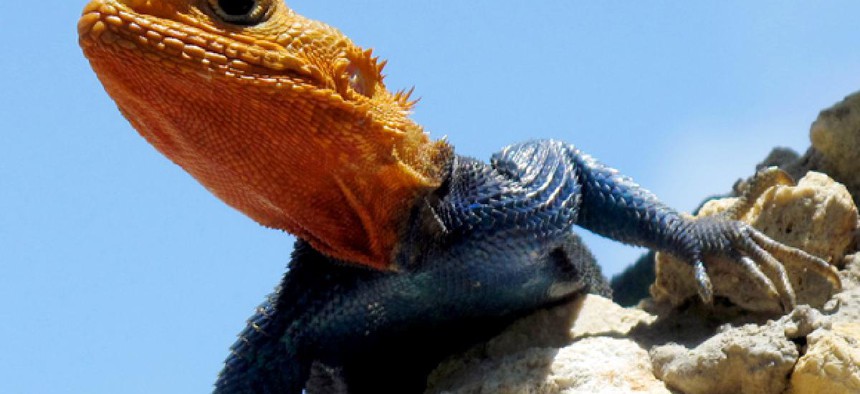Robots Haven't Had Much Luck Walking On Sand -- Until Now

Robotics researchers aim to imitate creatures that can run on sand, like this male Red Headed Agama. Sayyid Azim/AP File Photo
Researches design a fast-moving, six-legged lizard robot.
If imitation is the sincerest form of flattery, then the natural world should be positively humbled by the current state of robotics. We have flying robots that mimic birds. We have leaping robots that mimic fleas. We have robots that mimic cheetahs and horses and snakes, making themselves at home within and upon all manner of surfaces.
One thing we've had a little less success in replicating, though, are the lightweight creatures that scamper over liquid-like surfaces like snow (and mud, and sandy beaches, and leafy piles, and pebble-y paths). The technical term for these slippery surfaces is "granular media" (or, even more technically, "flowable ground") -- and they've represented a significant challenge to would-be designers of automata. Walking on sand or snow requires a certain level of flexibility from the walker in question -- the kind human muscles are great at achieving, and the kind that's nearly impossible to achieve when your feet are made of metal or plastic. As a result, it's been especially difficult to build robots that are suited to traveling on terra sorta-firma.
Enter Chen Li, Tingnan Zhang, and Daniel Goldman -- a trio who, today, announced their development of "a resistive force model that predicts forces on arbitrary-shaped legs and bodies moving freely in granular media in the vertical plane." Which is another way of saying, as Discovery Magazine puts it: They've created a model that is "a crucial first step of building a sand-walking robot."


